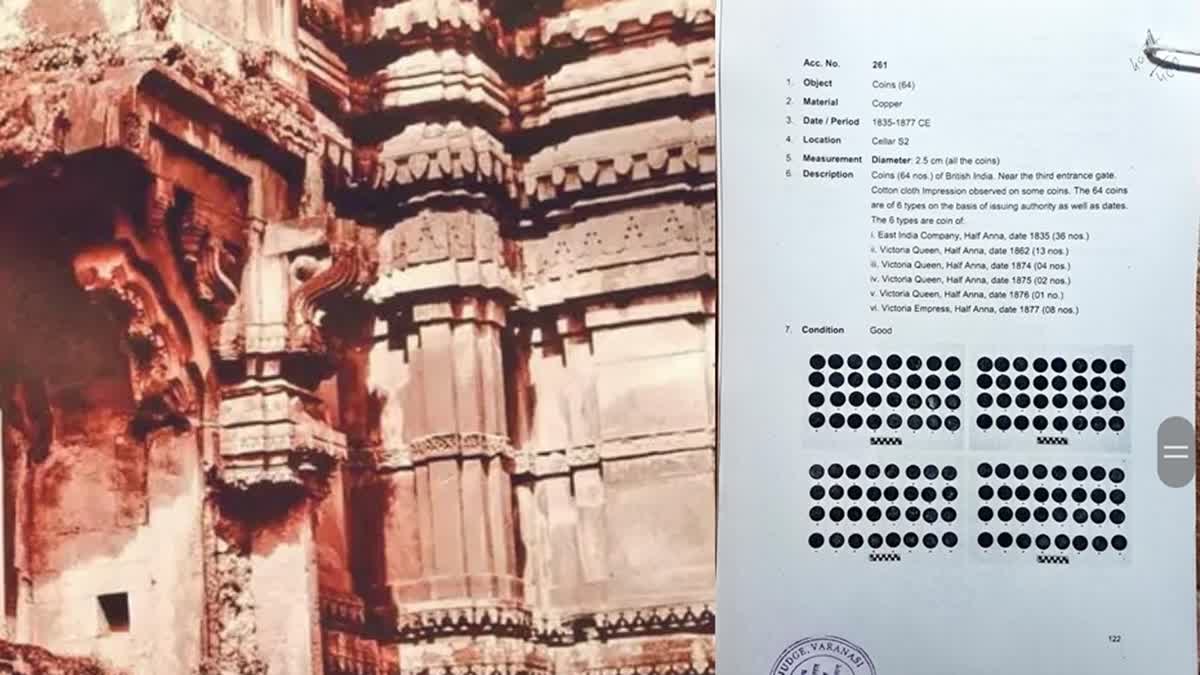Varanasi: The Archaeological Survey of India which has claimed to have found the Gyanvapi mosque in Uttar Pradesh's Varanasi to have been built on the ruins of a pre-existing temple has also found Mughal era coins buried underneath the mosque, sources said. The ASI, which recently published the over 800-page report said that the dome of the mosque was only 350 years old.
The survey was carried out by the Archaeological Survey of India per the order of 21 July 2023 by the district court. The Archaeological Survey of India has claimed to have found stone sculptures, stone structures, designed stone slabs and various verses written in Sanskrit, Devanagari, Kannada and Telugu besides symbols of 'Om' along with Hindu symbols trident and swastika.
Sources said that besides the Hindu symbols, the ASI team has also found hundreds of coins from the reign of Aurangzeb to the modern century. Many coins from 1600 AD to 1900 AD have been found in different parts of the complex as per sources. These have been collected and handed over safely to the District Officer, Varanasi, which will serve as major evidence to strengthen the case in the court, they added.
Sources said that a marble stone with the name of Ram written on it, a stone crocodile riding on Ganga deity, a statue of Lord Hanuman, a statue of Lord Ganesha, a broken statue of Shankar Parvati, incomplete parts of the stone of Shivalinga and the pillar which supports the entire complex inside the basement have also been found. It is being considered as the biggest evidence of the existence of a temple.
- Read more: Gyanvapi Mosque Security Heightened Post ASI Report Release
- Gyanvapi ASI Survey Report: Photos Show Remains Of Lord Ganesha, Shivling
- Gyanvapi mosque case: ASI's 10 findings suggest presence of pre-existing Hindu temple
